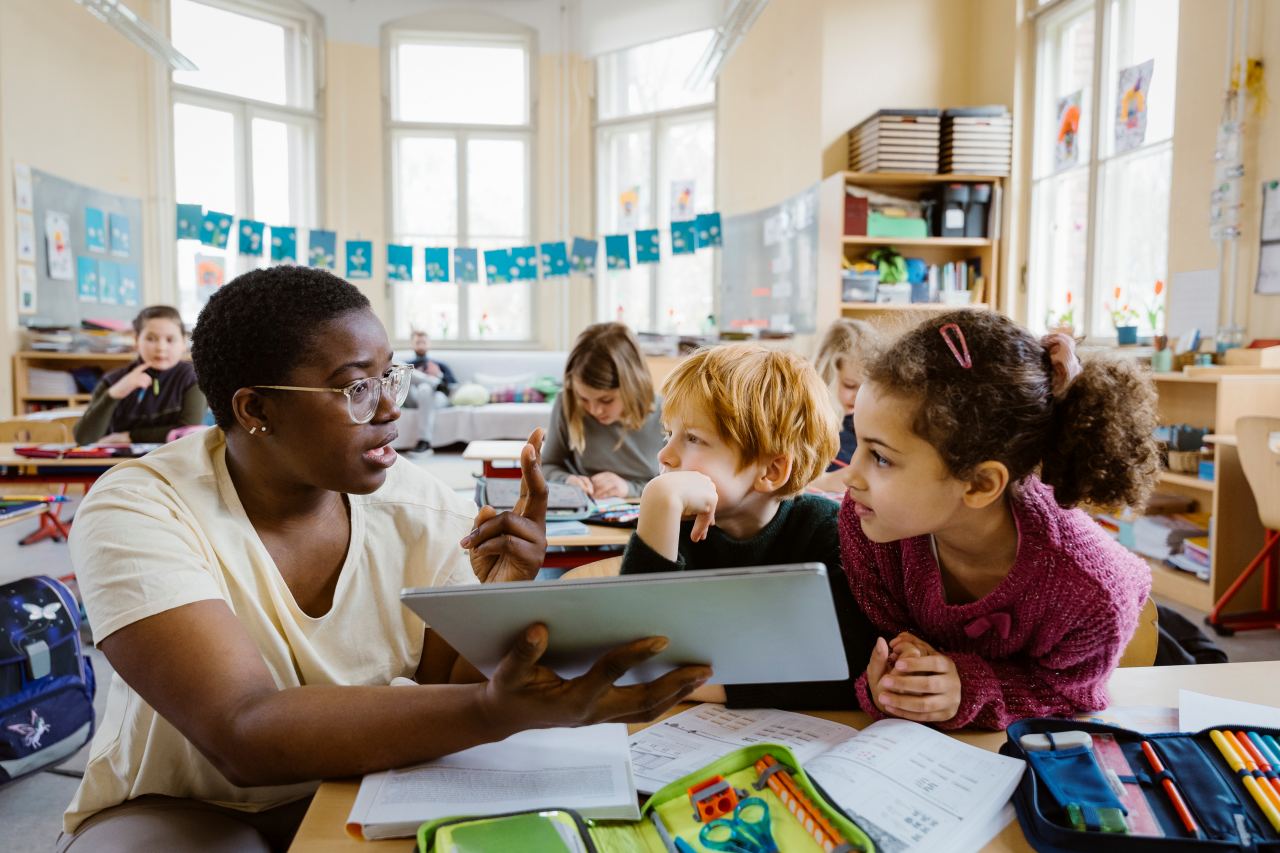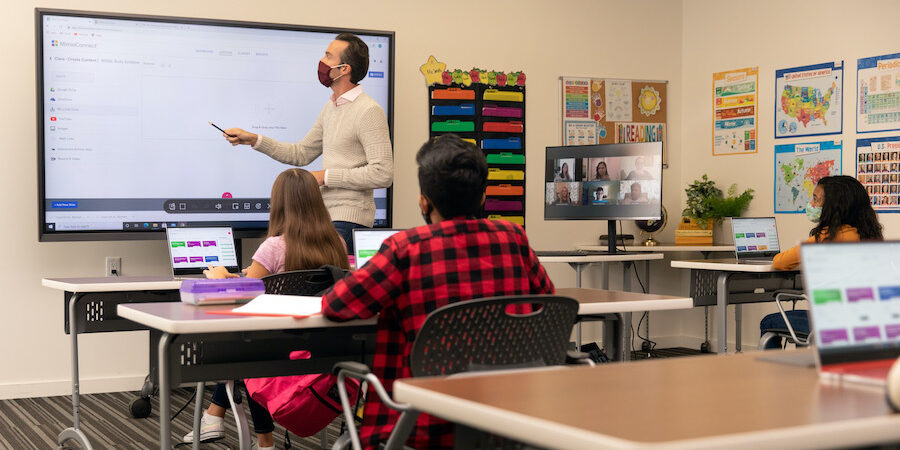Effective Primary Science Tuition Singapore for Better Exam Results
Effective Primary Science Tuition Singapore for Better Exam Results
Blog Article
A Comprehensive Overview to the Various Learning Methods in Primary Scientific Research Direction
The exploration of diverse understanding techniques in primary scientific research direction presents an opportunity for teachers to enhance pupil interaction and comprehension significantly. By checking out hands-on discovering methods, inquiry-based strategies, and collaborative techniques, we can identify reliable methods that cater to different finding out designs. In addition, the assimilation of technology and set apart instruction plays an essential duty in fostering a comprehensive environment. Nevertheless, the concern remains: exactly how can these approaches be efficiently applied in the classroom to optimize their influence? The answer hinges on a better analysis of each approach and its ramifications for training scientific research.

Hands-On Learning Strategies
Hands-on knowing methods play an essential duty in key scientific research instruction, engaging trainees in active expedition and trial and error. These methods allow learners to interact directly with materials and phenomena, cultivating a deeper understanding of clinical concepts. By utilizing manipulatives, designs, and real-life experiments, teachers produce an environment where students can observe, hypothesize, and test their concepts.
Such techniques not only boost understanding yet additionally grow important reasoning and analytical skills. When students take part in tasks like constructing straightforward makers, planting seeds, or conducting chain reactions, they are encouraged to ask inquiries and look for answers through their very own observations. This experiential method helps to debunk complicated clinical concepts, making them much more available and relatable.
Furthermore, hands-on understanding promotes collaboration amongst peers, as students usually function in groups to perform experiments or share findings. This teamwork not only enriches their discovering experience but additionally develops essential social skills. Inevitably, integrating hands-on strategies in main scientific research direction cultivates a lifelong love of understanding and curiosity regarding the environment, laying a solid foundation for future academic searches in science and beyond.
Inquiry-Based Understanding
Inquiry-based knowing is an instructional approach that motivates pupils to ask questions, check out sensations, and construct their own understanding of clinical principles. This approach shifts the focus from typical teacher-led instruction to a much more student-centered experience, where students take the campaign in their educational journey. By promoting curiosity, inquiry-based knowing promotes deeper involvement with the material, allowing pupils to explore topics in a purposeful context.
In technique, this approach typically includes hands-on experiments, monitorings, and vital thinking tasks that line up very closely with the scientific method. Students are motivated to formulate hypotheses, design investigations, and evaluate data, which cultivates vital abilities such as analytical and logical reasoning. The role of the teacher in this framework is to facilitate expedition, assisting trainees with the query process while motivating independent thought and collaboration.
Moreover, inquiry-based learning supports a feeling of ownership over the understanding procedure, inspiring students to pursue expertise proactively. This method not only boosts understanding of scientific ideas but also cultivates a lifelong love for learning, equipping pupils with the skills essential to browse a significantly intricate world.
Collaborative Learning Approaches
Joint knowing techniques encourage students to take part in purposeful interactions with peers, fostering a shared duty for their instructional outcomes. In main scientific research guideline, these strategies motivate students to interact to discover clinical concepts, resolve issues, and carry out experiments (primary science tuition Singapore). By taking part in team tasks, students can leverage diverse perspectives, enabling richer understanding and retention of scientific understanding
One secret element of collective discovering is the emphasis on communication abilities. Pupils have to express their thoughts, pay from this source attention actively to others, and bargain concepts, every one of which are critical competencies in both real-world and scholastic contexts. This social communication not just improves their understanding of scientific principles but also advertises synergy and problem resolution skills.
When great site pupils see the value of their contributions within a team, they are much more most likely to take ownership of their discovering trip. In general, incorporating collective learning methods in key science direction grows a vibrant knowing setting that prepares students for future scholastic and social obstacles.
Technology Combination in Scientific Research
The assimilation of technology in main scientific research guideline enhances discovering experiences by giving cutting-edge tools and resources that support different mentor techniques, consisting of collaborative knowing - primary science tuition Singapore. The usage of electronic systems, simulations, and interactive applications permits pupils to involve deeply with clinical principles, helping with a much more hands-on technique to discovering
Online laboratories, for circumstances, make it possible for students to perform experiments securely and effectively, advertising inquiry-based learning. These tools can replicate real-world clinical situations, permitting trainees to picture complicated processes that would be difficult to replicate in a typical class setup. Moreover, innovation promotes communication and cooperation amongst trainees, as they can share searchings for and interact on projects via on the internet platforms.
Additionally, multimedia discussions and academic videos can improve lessons by catering to varied discovering designs, making abstract ideas much more accessible. Data analysis devices also encourage trainees to collect and translate scientific information, reinforcing crucial assuming skills. On the whole, the calculated incorporation of modern technology in main scientific research instruction not just enhances interaction yet likewise prepares pupils for a technologically sophisticated society, equipping them with essential abilities for future scientific ventures.
Set Apart Instruction Methods
Differentiated direction approaches are essential for attending to the varied needs of learners in main scientific research education and learning. These techniques allow instructors to customize their training techniques to fit differing capacities, interests, and learning styles within the classroom. By utilizing separated guideline, educators can develop an inclusive environment that fosters engagement and improves understanding of scientific ideas.
One efficient method is to utilize versatile grouping, which allows students to collaborate with peers at similar skill degrees or with varying viewpoints. look at this now This strategy urges peer discovering and advertises critical thinking. In addition, providing choices in assignments can empower pupils, permitting them to choose jobs that resonate with their passions while still meeting curricular objectives.
In addition, including tiered tasks is one more valuable strategy. By making tasks with varying degrees of complexity, educators can ensure that all pupils are properly challenged, no matter of their efficiency. Utilizing developmental evaluations to gauge recognizing further makes it possible for instructors to adjust their educational methods dynamically, making certain that each student receives the support they require.
Eventually, implementing separated instruction methods in primary scientific research education not only boosts student understanding outcomes yet also cultivates an interest for science, preparing trainees for future scholastic pursuits.

Verdict
In summary, reliable primary scientific research guideline requires a complex technique that incorporates hands-on discovering, inquiry-based approaches, and collective strategies. The integration of modern technology and differentiated direction further accommodates varied knowing designs, cultivating an environment helpful to expedition and vital reasoning. By implementing these techniques, instructors can boost student interaction and comprehension, inevitably nurturing a lifelong enthusiasm for scientific research and questions. Such comprehensive approaches are necessary for creating informed and curious future scientists.
The expedition of diverse knowing methods in primary science instruction offers a possibility for instructors to improve student engagement and understanding dramatically.Hands-on understanding methods play a critical role in key scientific research direction, involving trainees in active expedition and experimentation.Inquiry-based knowing is an educational strategy that urges pupils to ask concerns, investigate sensations, and build their own understanding of clinical principles.Collective knowing approaches encourage students to involve in significant communications with peers, cultivating a shared responsibility for their academic outcomes. In general, integrating collaborative understanding methods in key science guideline cultivates a vibrant knowing setting that prepares students for future scholastic and social obstacles.
Report this page